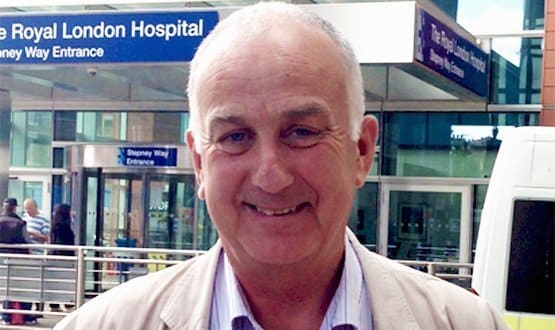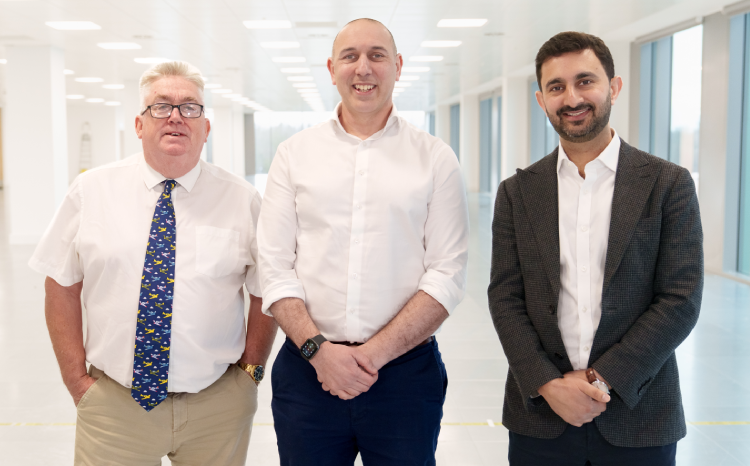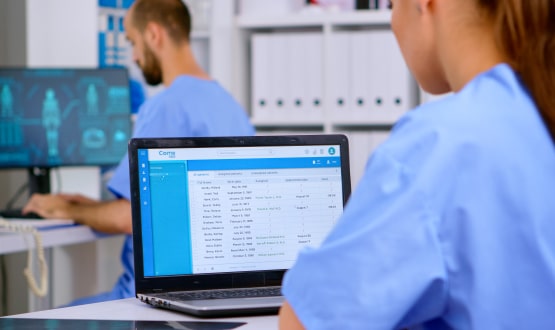Snarly, in a good way
- 21 July 2014

Like so many big London institutions, Barts has a complicated history. Its Wikipedia page points out that it runs the oldest hospital in Europe – one that still occupies its original site.
But thanks to endowments and expansions – and the determined efforts of the ‘Save Bart’s’ campaign to fight off closure in the early 1990s – it has gone on to become one of the largest trusts in the country.
In 2012, Barts and the London NHS Trust merged with Whipps Cross University Hospital NHS Trust and Newham University Hospital NHS Trust to create Barts Health NHS Trust, covering a population of over 2.5m people in the east of the city.
The recent history of Barts’ IT has been hardly less complicated. In 2008, Barts and the London implemented Cerner Millennium as part of the National Programme for IT; a deployment that went disastrously wrong. Newham had its own experience of Millennium, while Whipps Cross remained relatively paper-based.
The trust has now drawn up an ambitious IT strategy, to move all three hospitals onto a single instance of Millennium, and to start using it to deliver more integrated care.
Integrating hospitals: one instance of Millennium
Working through all this has been Charles Gutteridge, the trust’s chief clinical information officer. “It’s a very big and complicated, very snarly bit of informatics; and it’s also a relatively snarly piece of medical politics,” he says.
“There's tension with these types of relationships, because working as one has its own stresses, strains, excitements and so on. The practical consequences can be a bit uncomfortable, because we have to change the way we work.”
The Royal London and Barts hospitals recovered from their initial IT troubles, and have now been using Millennium for six years. Gutteridge says this makes them “quite mature in the sense that most people know it exists, and most people use it in one way or another.”
By contrast, Whipps Cross Hospital was, until recently, operating on McKesson’s legacy Totalcare PAS. It started its transfer to Cerner late last year, ahead of coming to the end of the McKesson licence in March.
Newham University Hospital deployed Cerner Millennium in 2005, ahead of NPfIT, and uses a more modern code, with its own domain and its data sitting in the Cerner data centre instead of that run by London’s local service provider, BT.
To help bridge the gap between the hospitals, and to move them all onto the same instance of Cerner Millennium, Gutteridge has the help of what he calls his “four amigos” – the clinical information officers appointed at the same time as he was last May.
Gutteridge says the CIOs are each responsible for a separate site, and have different responsibilities depending on their location.
“At Whipps Cross, the job is to help the others understand what the implementation is all about. It’s about helping the IT team to drive it through… explaining, nudging and cajoling people by saying: ‘It’ll be alright’.”
At Newham, the CIO's focus is translating the hospital's different version of Cerner Millennium to fit with Royal London and Barts, trying to “align our thinking” and prepare the hospital's system for integration into the Barts Health domain.
At Royal London and Barts, which Gutteridge describes as “the main engine of change”, the CIOs have been broadening their focus, with an effort to convince academics about the benefits of point-of-care data collection.
The ultimate goal is to provide a single healthcare platform for most of east London, allowing the trust's hospitals to further develop their specialities while still being able to see all the relevant information for a patient who is normally treated elsewhere.
“One of the things that connects it all up is that ability to use a single system: if you see a patient in Newham and make a referral to your colleagues at Barts and then you’re part of the follow-up, it’s enormously helpful.”
Integrating with GPs: using the MIG
Outside the hospitals, another approach is needed. As Gutteridge is the first to recognise, it’s possible to integrate hospital IT by putting in one system, but “we can’t take this approach with a GP or mental health – we’ve got to design a different method of integration.”
In November last year, the trust went live with Cerner’s Health Information Exchange, which uses Healthcare Gateway’s Medical Interoperability Gateway to provide hospital clinicians with a summary of a patient’s GP record, held in Emis systems.
Gutteridge says the HIE has been a “fantastically productive bit of work” for the trust and one that has strengthened its relationship with primary care.
“In the past, they’ve scoffed about what was happening in hospitals because they were using electronic records and we were still quite far behind, but we’re definitely improving.”
Some 80% of GPs in Tower Hamlets have switched on to the HIE, while the remainder have all signed data sharing agreements; as have GPs in Newham.
GP practices in Waltham Forest and Redbridge pose greater issues for integration due to the diversity of IT systems in use, but Gutteridge remains confident about the project.
“Encouragingly, in that bit of east London, they’re beginning to say, ‘We’re now behind the curve, but we like the look of that solution because it seems relatively easy to implement.’
“If you look five years down the track, if we’ve got the MIG solution and HIE to work for MIG providers, I can see how that maps across Essex and all the way to Southend.”
Integrating with academic partners: work in progress
Another potential level of integration, albeit one at an embryonic stage, is that between separate healthcare providers – such as those within the UCL Partners academic health science centre, of which Barts Health is a member.
“Within the group of hospitals at UCL Partners, there are a disparate range of systems and disparate cultures, but there are these little hooks [to support integration].”
For instance, Gutteridge says, teaching hospitals can benefit from connecting with other hospitals’ systems for research purposes, while Millennium users have an obvious link to help integrate with each other.
“There are cultural problems and contractual problems rather than technical ones, and as trusts leave the national programme and set up with Cerner, I think we’ll see much broader integration.”
Expensive, difficult, brave
The scale of the work seems overwhelming and Gutteridge is under no illusions about its complexity, or the risks that the senior management are taking.
“If you talk to people who have done this many times, they say that the transformational work that we’re trying to do in these hospitals is a five- to ten-year job,” he says. “People say: ‘It can’t take that long really.’ And then they discover that it does. So we’re really only halfway through.
“It’s crucifyingly expensive, so it takes a brave chief executive to say: ‘This is a ten-year project, let’s chuck a lot of money at it, even though I’m not going to get anything in the first two years except vexation and a whole lot of earache'.”
Fortunately: “We’ve had chief executives, medical directors, and IT directors who wanted to create something of this size, and that senior leadership has been constant all the way through.”
Gutteridge says clinical leadership has also been valuable, with the Royal London's A&E department leading the way on use of Millennium and providing a useful test for other departments and organisations working on integration.
“We talk about the A&E test: if a patient attends the A&E department at three in the morning, is the data in their record and available to the doctor assessing them, without fail?”
But already yielding benefits
The improved integration is changing the way departments work. Gutteridge says the haematology department has reduced the frequency of its outpatient visits from three months to annually, replacing “ten minute chats” with a more detailed discussion, using the EHR to identify problem areas and make changes.
As well as delivering obvious efficiency savings, Gutteridge argues this leads to a more personalised, more helpful form of medicine; one that uses expensive medications and resources in a more strategic way, and that takes a longer-term view of preventing disease.
“You begin to see that you can use the same sort of techniques to prevent disease if you capture it early. If you look at the 25-year-olds who are eating and drinking too much, you can try to stop them growing up to become 55-year-old alcoholic diabetics.”
Two thirds of the way there: lots still to do
The trust is about two-thirds of the way through the integration of the different hospitals, and is about to move out of the BT data centre, and into the Cerner data centre.
“There is a challenge about how Cerner will run a large-scale data centre, because they haven’t done here. They are fantastically good at doing it in the US, though, so it shouldn’t be an issue,” Gutteridge says.
Medicines management is also a priority; without it, the trust can hardly claim to be working towards ‘paperless’. “We still prescribe on paper, and it’s such a large part of modern medicine that until we [add it to the system], we’ve only done three-quarters of the job.”
Asked for one key message for other CCIOs working on integration projects, Gutteridge picks “do less and think more”. He explains: “Implementation is often about imagining the future and imagining what can go wrong, then managing it beforehand.”




